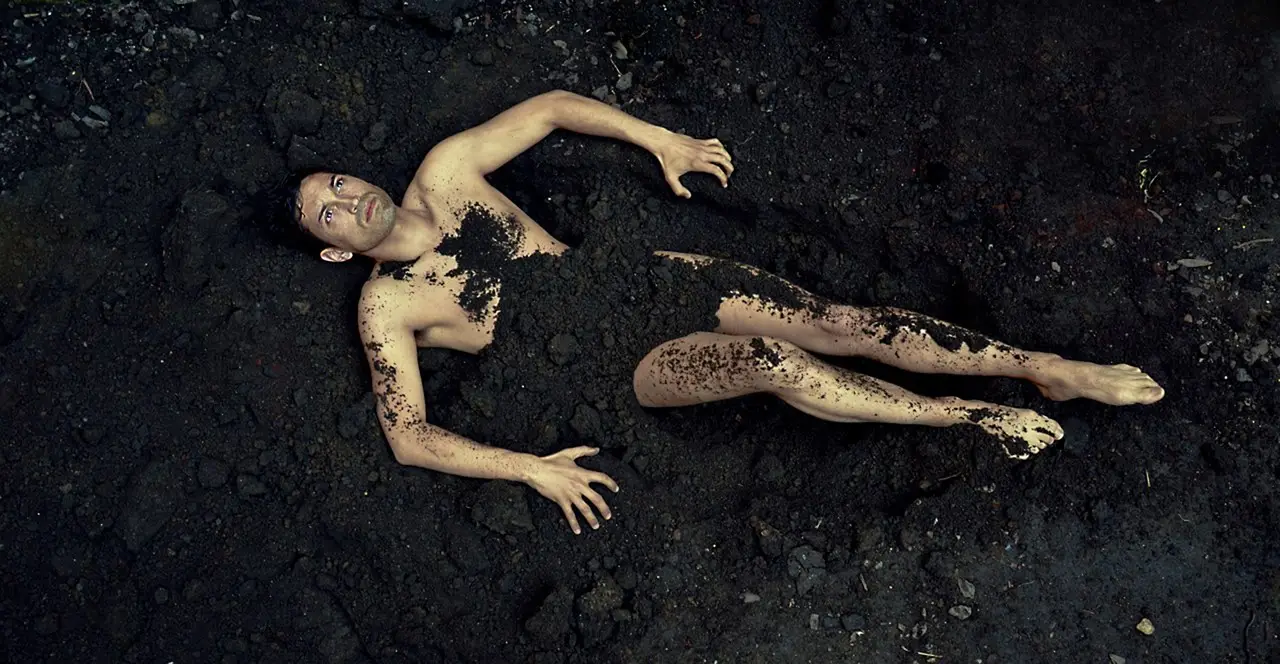Introduction
How many men do you know who are living a life they never chose?
We bury our lives, often without knowing it.
We trade our wildness for routine, our wonder for efficiency, and our dreams for duty.
In the quiet hours—between meetings, mortgages, and expectations—a silent ache stirs:
Is this all there is?
This is the buried life of men.
We commit quiet violence against ourselves, amputating parts of our souls to fit into the small boxes we were given. We shrink our desires to meet the narrow myth of manhood. We perform, provide, and persevere until the man behind the mask barely breathes.
But the question remains beneath the concrete layers of conformity:
Can buried lives be resurrected?
I recently finished Andrea Goldsmith’s book The Buried Life, which made me reflect on my own buried life, the buried life of my father and the lives of the men around me. From that reflection came this blog.
It is an excavation.
It is a search for the lost self many of us buried long ago—and an invitation to pick up the shovel.
The Buried Life: A Silent Epidemic
The phrase comes from a poem by Matthew Arnold, “The Buried Life,” published in 1852. In it, Arnold describes the disconnection between the life we show to the world around us and the life that stirs within us and longs to be expressed.
While not a new phenomenon, this disconnection is increasingly relevant today, which demands that men be everything except themselves. The disconnect has taken on modern dimensions, particularly among men socialised early to prioritise performance, provision, and control over vulnerability, exploration, and self-actualisation (Real, 1997).
By adulthood, many men have mastered the art of suppression. We excel at our jobs, provide for our families, and fulfil societal roles, yet feel hollow inside, living life out of obligation, rather than by choice. For many men, these roles are not conscious choices; instead, they are inherited scripts that are unconsciously passed down.
Why Do Men Bury Their Lives?
1. Social Conditioning and the Myth of Masculinity
At the core of the buried life lies the myth of masculinity.
This myth refers to the socially constructed and idealised set of beliefs about what it means to “be a man.” It is not masculinity itself that is the problem, but the rigid, performative, and often narrow script that defines manhood in terms of dominance, emotional suppression, stoicism, achievement, and heterosexual prowess (Kimmel, 2017). Masculinity becomes a performance that we are socialised to enact at the expense of our selves (Butler, 1990).
This conditioning to perform does not end in adolescence. The adult male world reinforces these codes through workplace culture, media, and family expectations. Men are taught that their worth lies in their ability to produce, protect, and persevere, leaving little room for introspection or genuine self-expression.
2. The Trap of Roles and Responsibilities
Our roles and responsibilities, while necessary, often become prisons. The provider role is especially burdensome, as men feel obligated to sacrifice personal passions for financial security and stability (Pleck, 2010). Over time, this self-sacrifice is seen as not a choice but an identity.
We no longer ask ourselves, “Who am I beyond my job, family, and duties?” Instead, we accept these roles as the totality of our existence, burying our desires and dreams in the process.
3. Fear of Vulnerability and Change
Perhaps the most insidious reason men bury their lives is fear—fear of being exposed, of failing, of disrupting the status quo. Digging up one’s buried life requires confronting uncomfortable truths: the life one has built may not be what one wants, and desires long ignored might call for drastic change.
Brown (2012) argues that vulnerability is the birthplace of authenticity; yet men are conditioned to avoid vulnerability at all costs. Thus, remaining buried feels safer than risking exposure. The familiar, even if hollow, becomes preferable to the uncertain.
How to Resurrect the Buried Life
Resurrecting a buried life is not a single act but an ongoing process of reclaiming our truth. It requires courage, introspection, and a willingness to defy cultural, family and often our expectations. It is the willingness to tear up the script we have been living by and start again.
Below are actionable steps that we can take to begin this process.
1. Break the Silence
The first step is acknowledging our buried life—naming it, speaking it aloud, and stopping pretending. This may involve journaling, therapy, or honest conversations with trusted friends. As Parker Palmer (2004) writes, “The soul is like a wild animal—tough, resilient, but shy. If we want to see a wild animal, we must go quietly into the woods” (p. 58).
Many men struggle to acknowledge their souls. This resistance is not due to a lack of soulfulness or depth, but because the myth of masculinity, along with the cultural, psychological, and social forces that define what it means to be a man, has disconnected us from our inner worlds.
Creating safe spaces to explore our inner world and break the silence is critical to resurrecting the self.
2. Reclaim Lost Desires
We must ask ourselves the uncomfortable yet liberating question: “What do I want?”
Not what I should want, but what stirs my soul. This may involve revisiting childhood passions, suppressed dreams, or forgotten creative pursuits.
Reclaiming lost desires includes our sexual desires and wishes. For many of us, whether straight or on the GBTIQ+ spectrum, our sexuality is based on genital performance rather than on a deep sense of intimacy, first with ourselves and then towards the other person.
We must pursue joy, curiosity, and meaning beyond our roles.
3. Challenge the Inner Critic and Rewrite the Narrative
We must confront the inner critic who tells us we are selfish or weak for wanting more. This voice is often an internalisation of societal expectations and parental scripts (Keen, 1991). We can live more fully by challenging and rewriting these narratives.
4. Take Small, Brave Actions
Resurrection does not require abandoning one’s life overnight. Small, intentional acts of authenticity can start to unearth the buried life. This may mean setting boundaries at work, carving out time for creative hobbies, or expressing feelings more openly.
Each authentic act is a shovel to the dirt that buries the self. Over time, these actions accumulate, shaping a life that mirrors one’s true self rather than a facade.
5. Redefine Success and Legacy
We must also broaden our definitions of success and legacy. Rather than viewing success solely in terms of financial or social status, we can redefine it to mean living by our values, fostering relationships, and leaving behind a genuine life story.
Living one’s resurrected life is a legacy—a model of courage for others to follow.
Conclusion
We have surrendered ourselves to roles, routines, and responsibilities, mistaking them for the total sum of who we are. However, buried does not mean dead.
There is a life beneath the surface, waiting.
Resurrecting it will not occur through one grand gesture, but through small, courageous acts—a conversation, a boundary, a dance, a brushstroke, a tear finally allowed to fall.
Moreover, no matter how small, each act becomes a crack in the concrete, a shaft of light breaking through the suffocating myths of masculinity.
This is not merely personal work; it is cultural repair. Every man who dares to live authentically permits other men to do the same.
The question is no longer: Can we resurrect our buried lives?
The question is: Will we?
The shovel is in our hands.
Are we ready to dig?
References
Arnold, M. (1852). The buried life. In Poems (pp. 107-109). London: B. Fellowes.
Beck, J. S. (2011). Cognitive behavior therapy: Basics and beyond (2nd ed.). Guilford Press.
Brown, B. (2012). Daring greatly: How the courage to be vulnerable transforms how we live, love, parent, and lead. Gotham Books.
Butler, J. (1990). Gender Trouble: Feminism and the Subversion of Identity. Routledge.
Keen, S. (1991). Fire in the belly: On being a man. Bantam.
Kimmel, M. (2017). Guyland: The perilous world where boys become men. Harper.
Maslow, A. H. (1943). A theory of human motivation. Psychological Review, 50(4), 370–396.
Palmer, P. (2004). A hidden wholeness: The journey toward an undivided life. Jossey-Bass.
Pleck, J. H. (2010). The gender role strain paradigm: An update. In R. F. Levant & W. S. Pollack (Eds.), A new psychology of men (pp. 11-32). Basic Books.
Real, T. (1997). I don’t want to talk about it: Overcoming the secret legacy of male depression. Scribner.
Turner, R. H. (1978). The role and the person. American Journal of Sociology, 84(1), 1-23.




